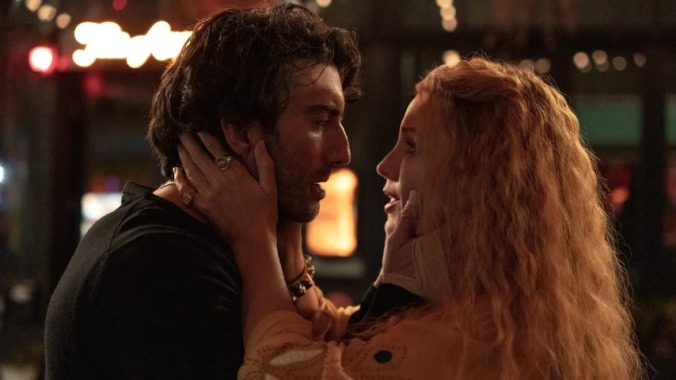‘It Ends With Us’ Claims to Be About Breaking the Cycle of Abuse…But Doesn’t
According to Colleen Hoover, It Ends With Us is a faithful adaptation of her 2016 debut novel...which is probably why it plays like a big-budget Lifetime movie with a bottom line that could've been heard onstage at this year's RNC.
Photo: Sony PIctures EntertainmentMovies It Ends With Us
Warning: Spoilers below.
If you’ve read Colleen Hoover’s polarizing 2016 novel, It Ends With Us, you know that flowers (more specifically, lilies) are a crucial plot point. Not only are they the protagonist’s namesake (full name: Lily Blossom Bloom), but they’re also the novel’s principal bungled metaphor for growth despite one’s roots being stuck in bad soil. And at an advance screening of the film adaption in Toledo, Ohio, lilies are deployed as a marketing gimmick, handed out to movie-going CoHorts and CoCritics such as myself in the form of a cheap iron-on patch reminiscent of a Girl Scout badge.
Made exhaustively evident by a recent series of florid frocks, Blake Lively stars as Lily, a florist who fled an abusive home only to find herself in another. Try as I might’ve back when It Ends With Us first hit shelves, I am not a Colleen Hoover fan. To be clear, it’s not that I’m in any way above a Target best-seller, it’s just that I had to quit the controversial author‘s debut novel long before the end because I found its narrative about intergenerational trauma and the cycle of abuse to be, well, trite. However, I’m also a masochist and there’s little to do in my hometown but hard labor and harder drinking. So, on Wednesday, I went where Nicole Kidman has never been before: The Cinemark at my local mall.
The film—as touted by Hoover herself in recent interviews—is “a faithful adaptation” of the novel, which is to say that my criticism remains largely the same. Only, once on the big screen, I felt it was contradictory and utterly unconscious of the confines of reality. Basically, it’s just a big-budget Lifetime movie with a bottom line that could’ve been heard onstage at this year’s Republican National Convention thanks to its father-induced trauma, flat humor, and perplexing framing of domestic violence.
-

-

-

-

-

-

-

-

-

-

-

-

-

-

-

-

-

-

-

-

-

-

-

-

-

-

-

-

-

-

-

-

-

-

-

-

-

-

-

-








































